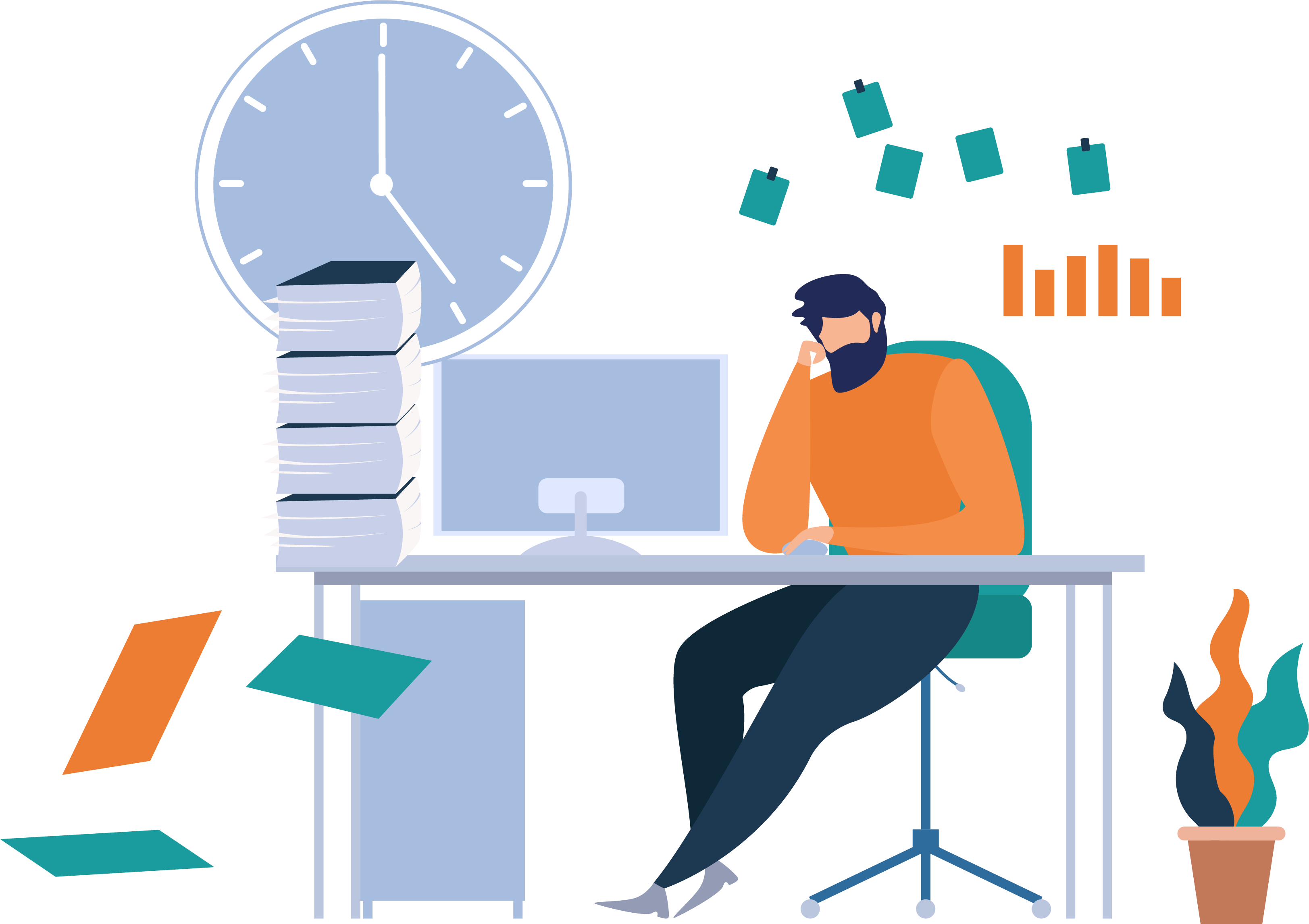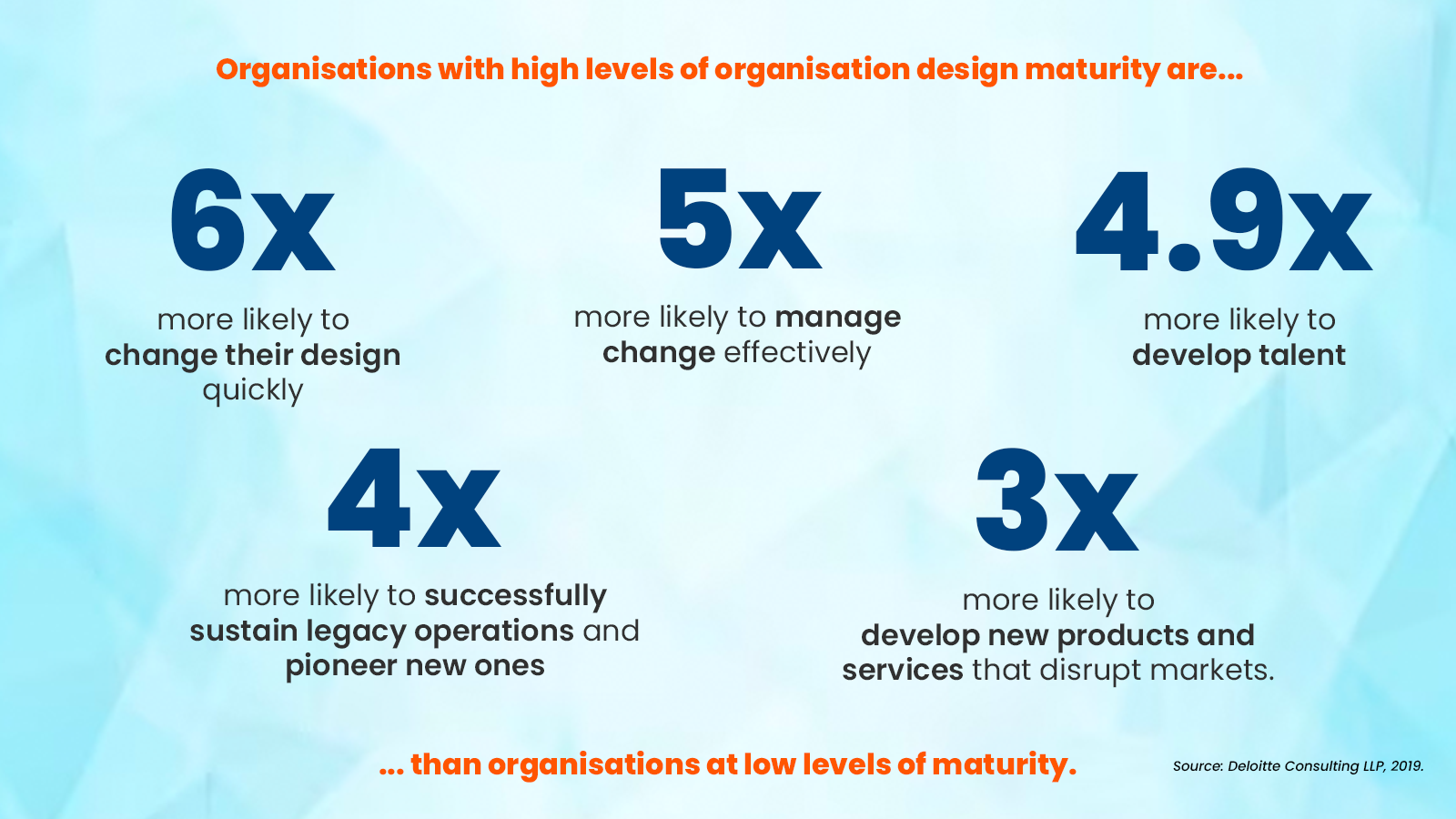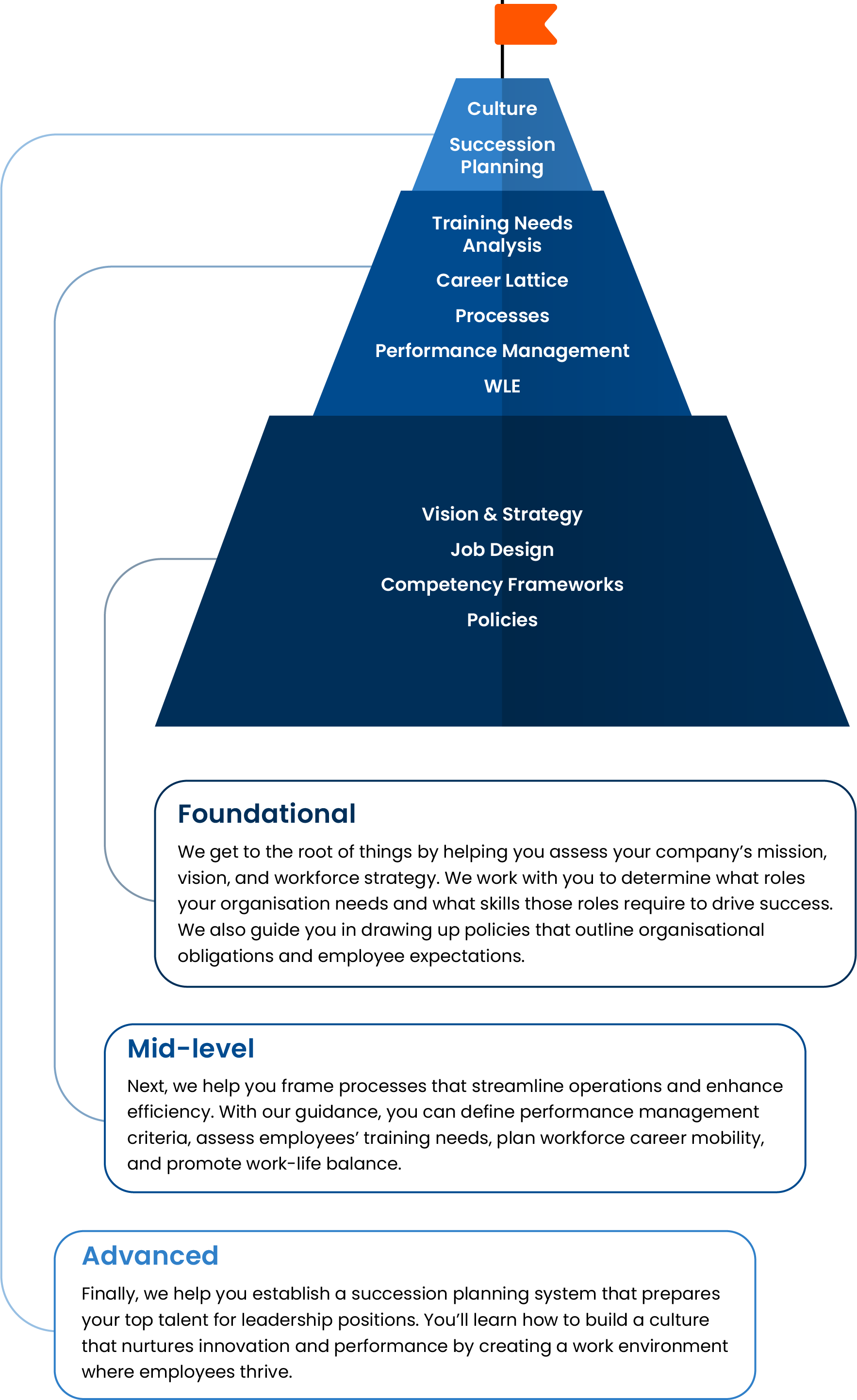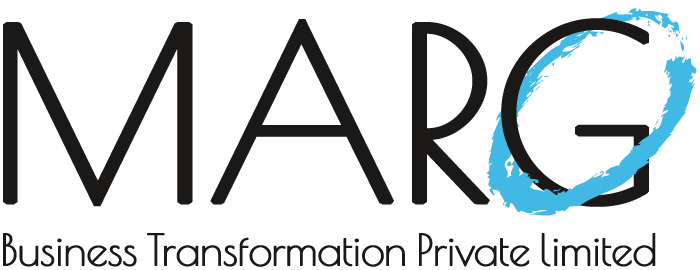- Dysfunctional workflows
- Poorly performing teams working in silos
- Task redundancy or duplication of effort across teams or individuals
- Lack of accountability
- Delays in decision-making
- Poor upward and downward communication
- Lack of authority to address problems.
Can’t get productivity levels up?

Organisational design: Restructuring for success
Organisational design takes a holistic view of the entire organisation, from its systems and processes to people practices, policies, culture, and ways of measuring performance. By aligning people and their skills with the work they do, Organizational Design shapes organisations to better achieve their business objectives. These people-skill alignment efforts include designing how jobs, roles, and responsibilities are distributed throughout the organisation.

Organisational design maturity model


Our key services
Competency Frameworks
HR Strategy
Job Design
Work-Life Excellence
Succession Planning
A competency framework identifies the knowledge, skills, and other attributes employees must possess to be successful at their jobs. These frameworks help employees understand exactly what’s expected of them and aid organisations in making informed decisions about talent recruitment, retention, and succession planning while supporting employee learning and development.
Benefits
Provides a standard approach to defining job descriptions and communicating them to employees and candidates.
Helps identify and address skill gaps.
Clearly defines career progression requirements.
Helps align employee behaviours and skills with the organisation's mission, culture, and goals.
Minimises objectivity while assessing employees and builds a mechanism for constructive feedback.
Our approach
- We start by determining the criteria for superior performance in the job being studied.
- Next, we identify a clear group of top performers and a comparison group of average performers, based on the criteria selected in the first step.
- We then collect data on both groups through behavioural interviews, expert panels, surveys, job analysis, functional analysis, or direct observation.
- During data analysis, we identify the personality patterns and competencies that distinguish superior performers from average performers.
- In the validation stage, we conduct BEI on a second sample. We also conduct tests and offer training.
- Finally, we guide you in implementing the model in talent selection, interviews, career planning,succession planning, training and development, and compensation.
Make MARG your HR strategy partner
1
Aligning with organisational goals: Support business goals by identifying critical business areas that require people-focused planning and initiatives for organisational success today and in the long term.
2
Building culture and engagement: Build a people-centric HR strategy that promotes a positive workplace culture, enriches the employee experience, and boosts productivity.
3
Strategic workforce planning: Develop a robust HR strategy designed to identify your organisation’s current and future workforce needs and create clear guidelines on recruitment, onboarding, training, and retention.
Aligning with organisational goals:
Support business goals by identifying critical business areas that require people-focused planning and initiatives for organisational success today and in the long term.
Building culture and engagement:
Build a people-centric HR strategy that promotes a positive workplace culture, enriches the employee experience, and boosts productivity.
Strategic workforce planning:
Develop a robust HR strategy designed to identify your organisation’s current and future workforce needs and create clear guidelines on recruitment, onboarding, training, and retention.
Our approach
- Assess: Our HR strategy experts review your existing strategies and identify key focus areas to achieve HR process improvements.
- Plan: We design a strategy plan, outlining the workforce initiatives and process or policy changes required to align your HR strategy with business goals.
- Implement: Our experts work with you to execute the planned strategy, offering coaching and consultation throughout the process.
- Review and Iterate: Once the new strategy is in play, we evaluate the outcomes against predetermined benchmarks for success, iterating as needed.
Why Job Design?
Enhances productivity by clarifying roles and responsibilities, reducing ambiguity, and allowing employees to focus on tasks more effectively.
Improves job satisfaction by aligning jobs with the workforce’s skills, abilities, and interests, making employees feel competent and fulfilled in their roles.
Reduces turnover and absenteeism by providing employees with meaningful work, making them less likely to leave a job or be absent.
Promotes employee engagement by offering opportunities for autonomy, skill variety, task significance, and feedback.
Our approach
- Analysis: We begin by gathering information about the desired job outputs, the work needed to do the job, and the skills, resources and level of autonomy.
- Design: Our consultants review the available information and build a preliminary framework, including job titles and levels.
- Benchmarking: once we’ve defined the job design requirements. We create a pay structure for all the jobs being designed.
- Employee Mapping: The final step involves job mapping and completing the organisation’s job architecture before you roll out the newly designed jobs.
Why work-life excellence matters
Improvements in loyalty and retention
Increased employee motivation, productivity, and performance
Greater ability to attract talent
Lower training costs due to decreased employee turnover rates
Fewer absences, higher efficiency, and lower risk of burnout due to improved mental and physical health.
Our approach
- Customised frameworks and protocols to integrate work-life balance into policies and procedures that benefit both employees and organisations.
- Workshops focused on work-life balance strategies and techniques for setting boundaries, problem-solving, managing time, and prioritising self-care.
- Ongoing support and consultation to ensure effective implementation and sustainability of work-life balance practices.
- Regular evaluation and assessment of organisational culture and practices to identify areas for improvement and continued growth in fostering a healthy work-life balance.
- Consulting, assessment, and continuous support in developing employees’ mental well-being and teaching organisations and employees to leverage wellness to achieve professional and business goals.
Why succession planning?
Lessen disruption and ensure business continuity in the event of an unexpected departure.
Retain key knowledge and expertise within the organisation by transferring it to an internal hire.
Provide high-potential, top-performing employees with a clear path to career advancement.
Develop existing talent and save on hiring costs.
Our approach
- Identify potential talent: We select potential candidates for critical leadership roles from your organisation’s talent pool. Selection is based on demonstrated competence captured by your performance appraisal system.
- Leadership alignment: Our Leadership Alignment Workshop ensures leaders across functions see the value of Leadership Development and develop a common language to identify, appraise, and coach talent.
- Assessment and skill development: We assess potential candidates’ strengths and development needs and offer training for groups and coaching for individuals.
- Coached demonstration of competency: Each candidate is assigned 2-3 complex projects to complete in a certain period. Our experienced coaches support them through this phase.
- Selection: We help you develop or refine your selection process so you can identify the best candidates for your organisation’s most important roles.
- Role integration: After a leader is selected, we offer coaching and support through their first 45 days in the new role. We also support their teams when necessary, ensuring a smooth transition.
Our suite of organisational design services
Vision, Mission and Strategy
Job Design
Training Needs Analysis
Competency Framework
We help you define core competencies for each job, ensuring employees possess the skills necessary to be effective in their roles. Developing competency frameworks will produce improvements in recruitment, development, and performance evaluation.
